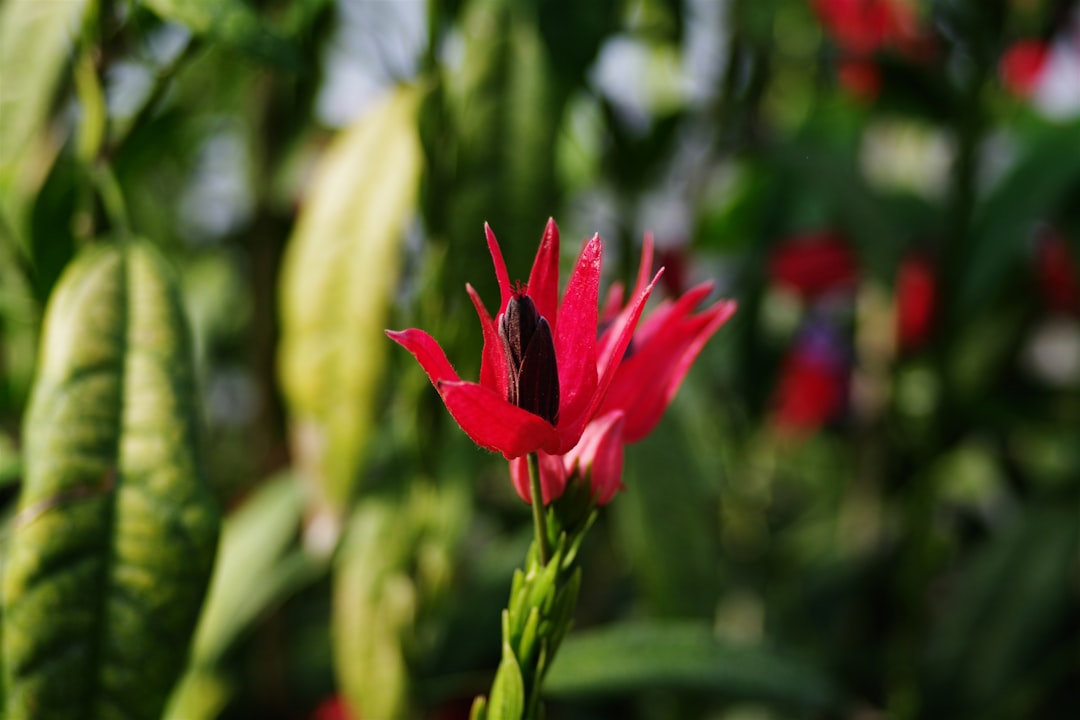Unveiling the Secrets of Cultivating Carolina Allspice

Carolina allspice, a native shrub, is a true gem in the world of gardening. With its fragrant spring flowers and vibrant yellow fall foliage, it adds a touch of beauty and charm to any landscape. In this article, we will explore the essential tips for growing this wonderful plant.
### Choosing the Right Location
One of the first steps in growing Carolina allspice is selecting the appropriate location. This shrub thrives in partial shade to full sun. However, in regions with intense summer heat, a spot with some afternoon shade can be beneficial to prevent the leaves from scorching. It also prefers well - drained soil. If your soil is heavy clay, consider amending it with organic matter such as compost or peat moss. This will improve the soil structure, allowing for better root growth and water drainage.
### Planting Carolina Allspice
When it comes to planting, dig a hole that is twice as wide as the root ball of the shrub. The depth of the hole should be equal to the height of the root ball. Gently place the shrub in the hole, making sure it is straight. Backfill the hole with the amended soil, tamping it down lightly as you go. Water the newly planted shrub thoroughly to settle the soil around the roots. It is advisable to plant Carolina allspice in the spring or fall when the weather is mild, which gives the plant time to establish its roots before the extreme temperatures of summer or winter.
### Watering Requirements
Carolina allspice has moderate water needs. During the first year after planting, it is crucial to keep the soil consistently moist but not waterlogged. This will help the roots develop properly. Once the shrub is established, it becomes more drought - tolerant. However, during prolonged dry spells, it is still a good idea to water it deeply once a week. Avoid overhead watering as this can lead to fungal diseases. Instead, water at the base of the plant.
### Fertilizing
Fertilizing Carolina allspice can enhance its growth and overall health. Apply a balanced, slow - release fertilizer in the spring. Follow the instructions on the fertilizer package for the correct amount to use based on the size of your shrub. Over - fertilizing can lead to excessive growth and may make the plant more susceptible to pests and diseases. Organic fertilizers, such as well - rotted manure or compost, can also be used. They provide a steady supply of nutrients to the soil and improve its fertility over time.
### Pruning
Pruning is an important aspect of maintaining Carolina allspice. It should be done in late winter or early spring before new growth begins. Remove any dead, damaged, or diseased branches. You can also shape the shrub by selectively pruning branches to maintain its desired size and form. However, avoid heavy pruning as Carolina allspice blooms on old wood. Over - pruning can reduce the number of flowers it produces.
### Pest and Disease Control
Carolina allspice is generally a pest - and disease - resistant plant. However, it can sometimes be affected by aphids, scale insects, or fungal diseases. Inspect your shrub regularly for any signs of pests or diseases. If you notice aphids or scale insects, you can use an insecticidal soap or neem oil to control them. For fungal diseases, ensure proper air circulation around the plant by pruning and spacing it correctly. If the problem persists, consult a local gardening expert for appropriate treatment options.
### Enjoying the Beauty of Carolina Allspice
Once your Carolina allspice is well - established and thriving, you can enjoy its many benefits. In the spring, the fragrant flowers will fill the air with their sweet aroma, attracting pollinators such as bees and butterflies. In the fall, the yellow foliage provides a stunning display of color. You can use Carolina allspice as a specimen plant in your garden, or plant it in groups to create a natural hedge or border. With proper care and attention, this native shrub will be a long - lasting and beautiful addition to your landscape.
In conclusion, growing Carolina allspice is a rewarding experience. By following these essential tips on location, planting, watering, fertilizing, pruning, and pest control, you can ensure that your shrub grows healthy and vibrant, providing you with years of beauty and enjoyment.